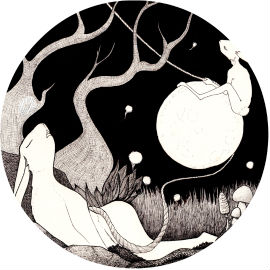God, I think I’m becoming a museum tragic. All of my letters home are filled with the stories I find in them, and in the conversations I rarely have the courage to strike up with strangers. I’m sure I’m boring all my long-suffering friends to death, so instead I should start posting these snippets of wonder here.
So, three curios from the Amsterdam Museum.
During the golden age of Dutch history (the seventeenth century) the nation was awash with wealth and energy. The VOC (Dutch East Indies Company) had brought enormous financial stability through trade in spices, silver and slaves. It is the era to which the dutch cultural heart returns, again and again. A time of possibility, a time when the nature of Dutch politics and culture were formed. This beautiful silver bird is a spice container. An elegant, extraordinarily pretty but functional item. Something about the combination of practical purpose and ornamental finesse seems to me to express something fundamental about the Dutch. The notes accompanying this beautiful object note that because spices were so expensive, and so symbolic of the wealth of the burgeoning nation, spice containers were often highly decorative. Secular objects of worship.
This beautiful decorative trowel and trowel box were used by Anna Heineken to lay the foundation stone of her son’s new brewery in 1867. The trowel box is an opened out model of the brewery building, with a silver plaque bearing a dedication in the base. The dedication refers to the gin distillery at Schiedam, asserting that while the distillery encourages unhealthy drinking, Heineken is good for you!
The tragedy of the second world war, and particularly of the holocaust, is ever-present in this beautiful city. Regret and sadness over what happened seem as ubiquitous as the sand that seeps up between the cobbles of the streets. Tramline number 8 used to run through the heart of Amsterdam’s Jewish quarter. It was known before the war, colloquially, as the Jews’ tram. In July, 1942, as one of the measures introduced by the German occupiers to subjugate the Jewish people, they were forbidden to use public transport. Tram line 8 stopped running, except for one awful exception. The tram was used to transport Jewish people from the city to the holding camp at Westerbork, from where so many were sent to their deaths in the camps. Since the end of the war, no number 8 tram has ever run on Amsterdam’s streets.




No Comments